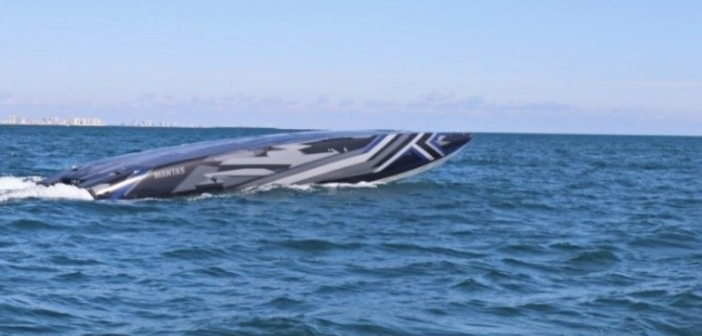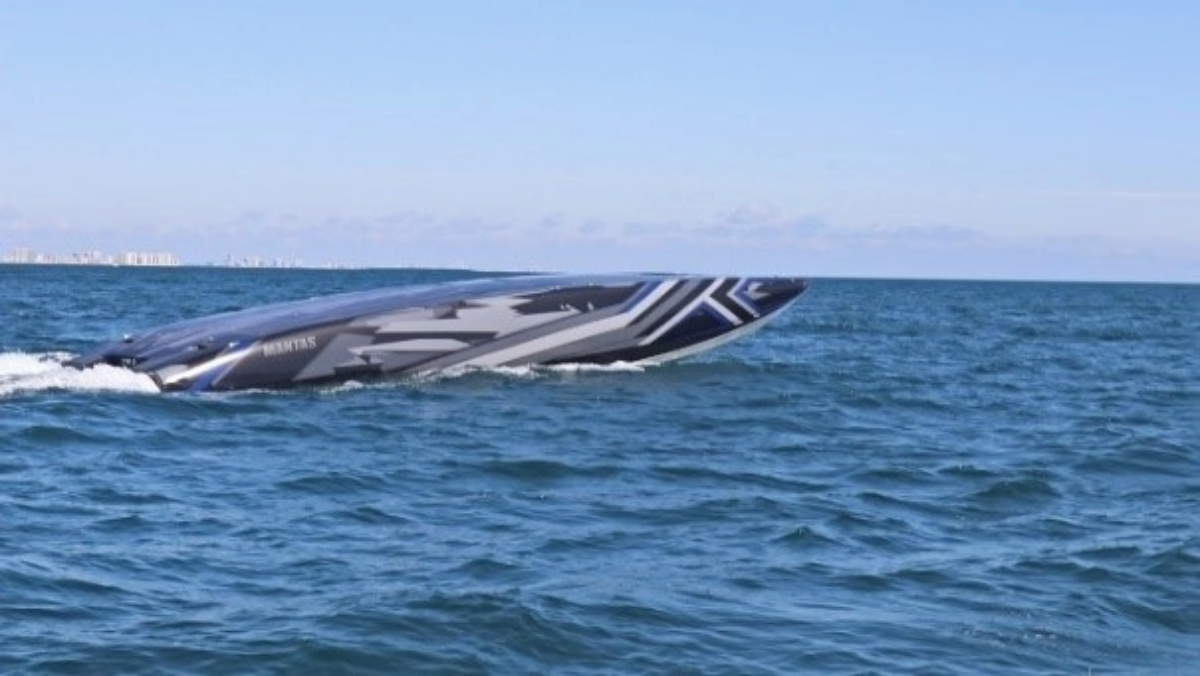
By Staff Writer.
There was kit and equipment galore at last week’s Indo-Pacific 2022 expo in Sydney. Some of the gear was big, and some was small. Nearly all was interesting and innovative, and much of it was Australian made. Here are five emerging technologies that caught our eye last week.
Virtual reality firefighting kits
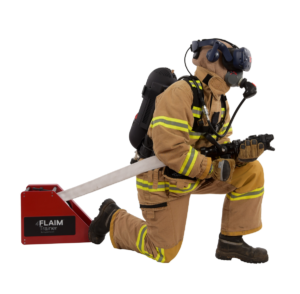 There was no shortage of takers keen to strap on the virtual reality headset at the expo and pretend to be a Navy firefighter battling a blaze after a helicopter crash. Geelong-based FLAIM makes immersive technology-enabled firefighter training kits that let firefighters practice fighting different kinds of fires and collect biometric data to enable trainers to watch how the student copes with changing and stressful situations.
There was no shortage of takers keen to strap on the virtual reality headset at the expo and pretend to be a Navy firefighter battling a blaze after a helicopter crash. Geelong-based FLAIM makes immersive technology-enabled firefighter training kits that let firefighters practice fighting different kinds of fires and collect biometric data to enable trainers to watch how the student copes with changing and stressful situations.
“We’re a world first,” said FLAIM’s Ned Searle. “From an organisational point of view, you can see how they are competing against their peers. From a capability point of view, you can see where your students are at.”
In addition to the headset, the virtual firefighting kits come with heat suits, a hose and nozzle, oxygen tanks and heat suits. “It’s the full sensory experience,” said Mr Searle. “You can see the stress level being recorded.”
Flaim’s virtual firefighting kits have found favour with the Australian Army, RAAF, and civil firefighting agencies. The Navy hasn’t come onboard yet, but the line of RAN sailors and officers keen to try out FLAIM’s one-of-a-kind product indicates that might soon change.
EOS weapon platforms that meet customised cannon requirements
Sydney-based EOS Defence Systems make fully stabilised remotely operated weapon stations that are integrated on various vehicle platforms and used for different mission profiles. With a range of cannons mounted on weapon stations on display at Indo-Pacific 2022, EOS hosted one of the busier stands.
Matt Jones, CEO of EOS, pointed out two of the company’s R400 weapon systems showcased at the expo that supported Northrop Grumman’s M230 cannons.
“EOS designed the systems that point and control the cannon engagements – the gimbal, the sensor units, the ammunition cans, everything that makes this cannon operate we design and build here in Australia. We customise to our client’s cannon requirements,” said Mr Jones.
“We offer a high calibre, longer range, high hitting power solution in lower weight, generally with a higher degree of accuracy than our competitors.”
Last week was a good week for EOS. They’d just found out their R400 weapons system (which the Australian Army already operates) will be fitted onto the incoming vessels set to replace the Royal Australian Navy’s aging LCM8 landing craft.
Riegl’s cutting edge terrestrial laser scanners
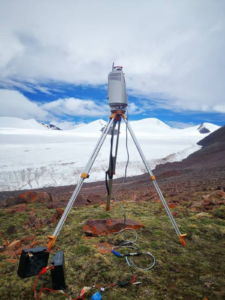 Using lasers to measure and survey terrain isn’t new, but Riegl’s terrestrial laser scanners are unusual because they provide detailed and highly accurate 3D data and cutting edge processing capabilities. Queensland based Riegl has been building terrain scanners for 40 years. On display at the Indo-Pacific 2022 expo was their latest VZ-2000i scanner.
Using lasers to measure and survey terrain isn’t new, but Riegl’s terrestrial laser scanners are unusual because they provide detailed and highly accurate 3D data and cutting edge processing capabilities. Queensland based Riegl has been building terrain scanners for 40 years. On display at the Indo-Pacific 2022 expo was their latest VZ-2000i scanner.
The VZ-2000i has a high laser pulse repetition rate of up to 1.2 MHz and provides high-speed data acquisition of up to half a million measurements per second. The proprietary processing architecture allows for data acquisition and simultaneous geo-referencing in real-time. It is a big step up from traditional laser scanners used for surveying and measuring.
“The VC-2000i does plane to plane matching and registration,” said Riegl’s Joseph Creedy. “It can do detections and changes in the landscape. It does one scan, and if something moves between that and the second scan, it will flag it.”
What’s also interesting about Riegl’s latest laser scanner is its 3D capabilities. Joseph Creedy says that attached to an aircraft and above a town, the VZ-2000i would capture three sides of a building in a single pass. Without the 3D capability, you’d just get the roof, and you’d have to come back at a different angle to get anything else. And that Mr Creedy says is Riegl’s point of difference.
Penten’s Helix battlefield encryption device gets fitted into a G-Wagon
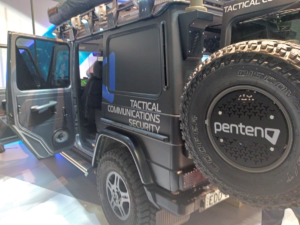 Bristling with antennas, Penten’s G-Wagon certainly looks the goods from the outside. But in the back of the vehicle are multiple communication platforms ranging from standard UHF transmitters to Penten’s flagship product, Helix, a device that encrypts communications out on the battlefield and tactical edge.
Bristling with antennas, Penten’s G-Wagon certainly looks the goods from the outside. But in the back of the vehicle are multiple communication platforms ranging from standard UHF transmitters to Penten’s flagship product, Helix, a device that encrypts communications out on the battlefield and tactical edge.
Penten is an Australian cyber security company with a focus on the secure transmission of military communications. “We’re the only Australian manufacturer of high-grade cryptographics capable of handling classified information,” says Sarah Fenton, Project Manager at Penten.
With an in-built modem, layer two encryptor and cross-domain, secure integration with existing wideband and narrowband radios, the Australian designed and made Helix provides sovereign high assurance encryption for the C4 network to enable secure communications between the joint force, regional partners and first responders.
“The beauty of this is you can now treat all your communication network as untrusted, and the encryption gets pushed as close to the edge of the network as possible, so that gives you a lot of flexibility in how you can connect things. The device will give you assurance,” Ms Fenton adds.
An AI-focused USV that looks like it’s out of the Batcave
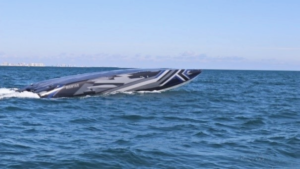 Turning heads at the Martac display was a scaled down version of their USV platform, Mantas. The USV looks like something out of Batman’s cave. The twin-hulled autonomous catamaran is based on a platform that has the worldwide powerboat speed record – the manned version has a top speed of 248 miles per hour.
Turning heads at the Martac display was a scaled down version of their USV platform, Mantas. The USV looks like something out of Batman’s cave. The twin-hulled autonomous catamaran is based on a platform that has the worldwide powerboat speed record – the manned version has a top speed of 248 miles per hour.
Ranging from 2 metres to 15 plus metres, this slick looking USV can perform full-scale missions and operations in the open ocean, rivers, and inland waters.
“Having a fast boat is nice, but it’s really all about the systems and how you manage a network of these types of craft to perform complex missions in the commercial and military space,” says Martac’s Chief Marketing Officer, Stephen Ferretti.
The Mantas has some pretty impressive specs and capabilities. But it is the move away from swarm USVs operating independently to USVs communicating with each other and/or being controlled by one or two other USVs that is the Mantas’ most impressive feature.
“Where we’re heading is making USV’s independent of the operator, it takes the man out of the loop. AI is the word that is most resonant,” adds Mr Ferretti. “We’re getting adoption of this technology because of the differentiators that it brings.”
One of the big takeouts of the Indo-Pacific 2022 expo is the diversity and development of Australia’s defence industrial base. Four out of the five pieces of kit and equipment highlighted here came out of Australia. What’s also interesting is that these companies are starting to sell locally rather than focus on exports.
“We proudly Australian,” said EOS’ Matt Jones. “We’ve got the agility and ability to meet the evolving and changing Commonwealth requirements.”


